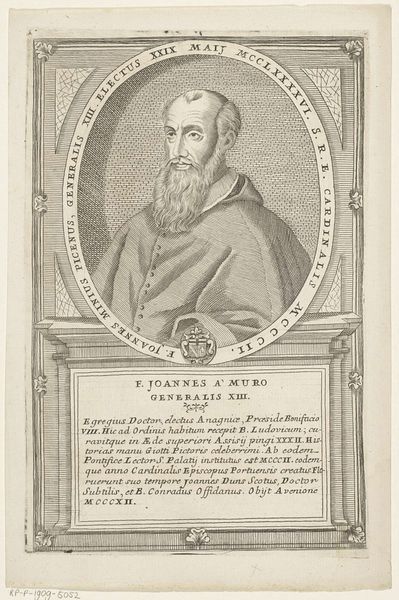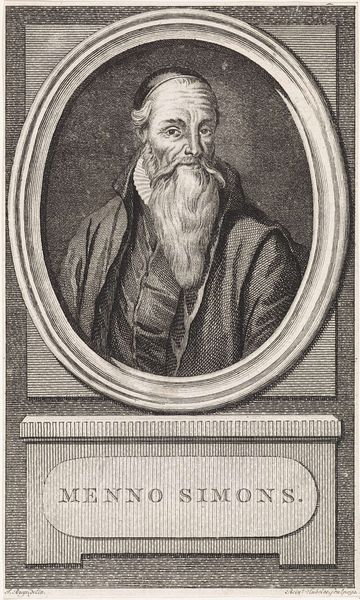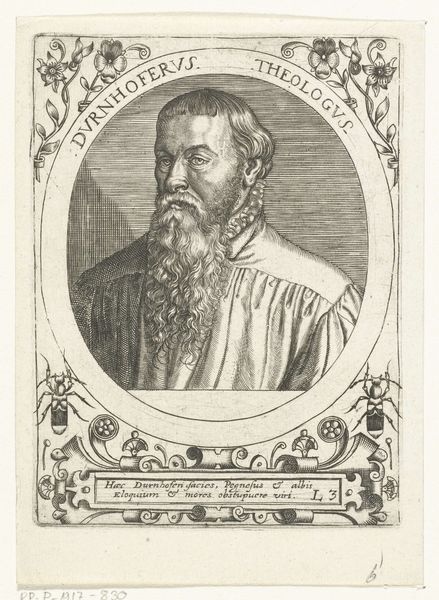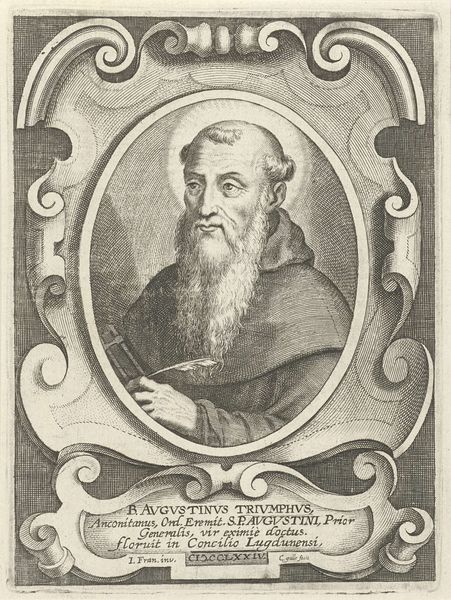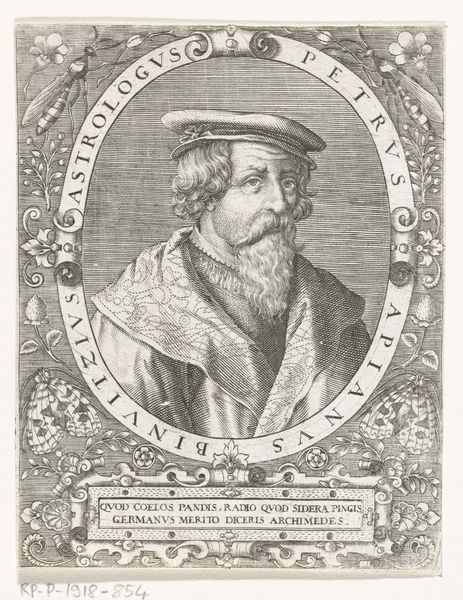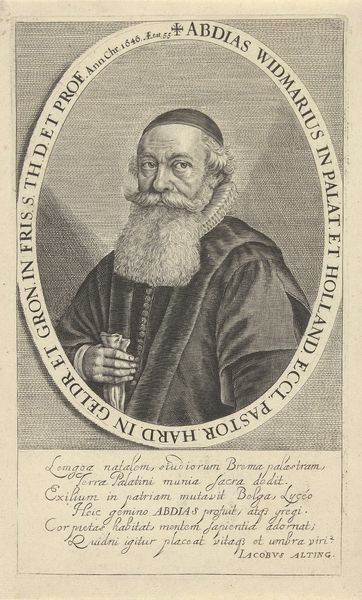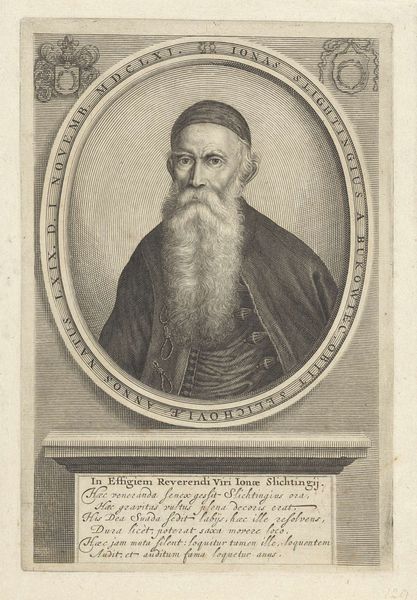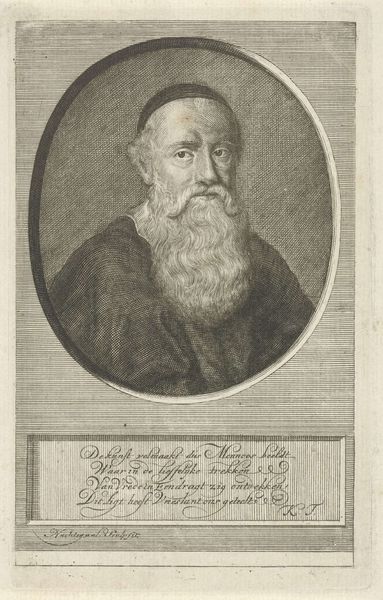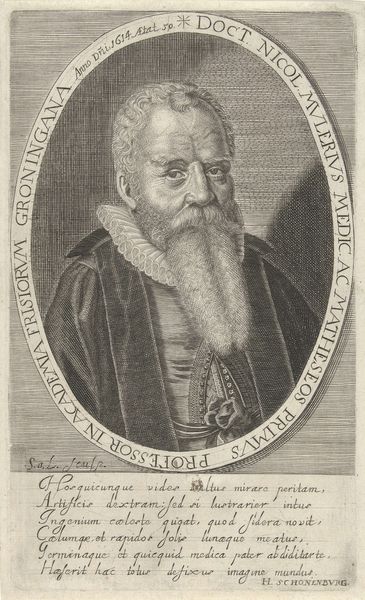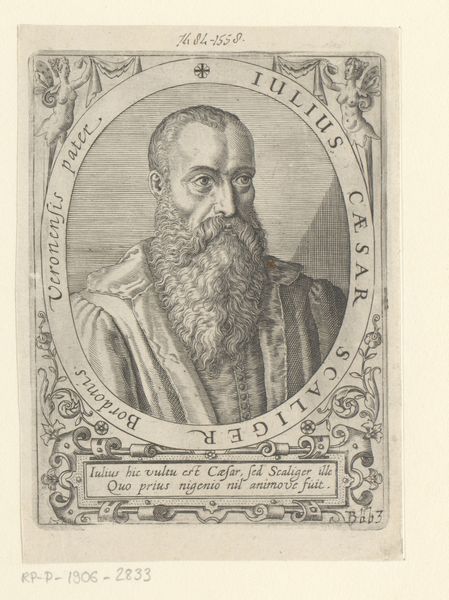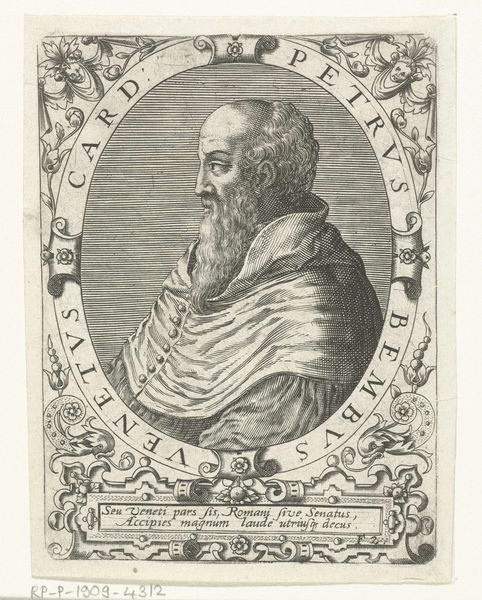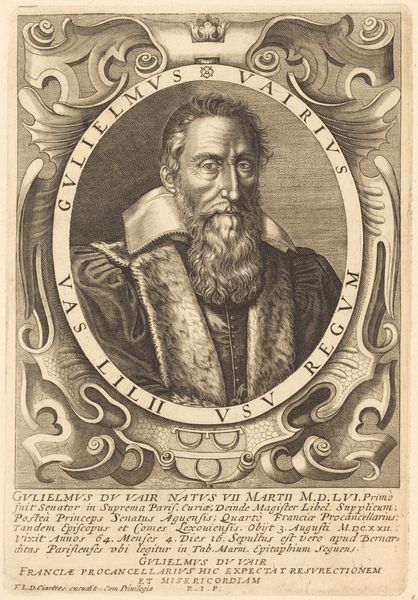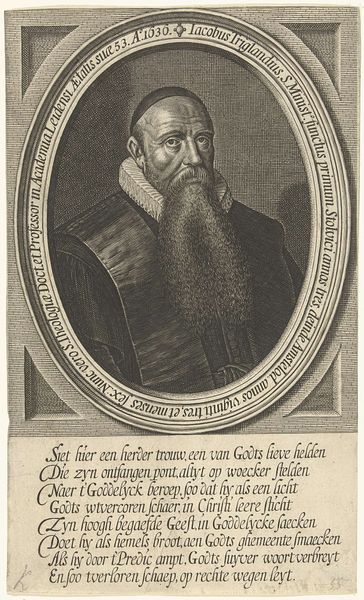
drawing, print, paper, engraving
#
portrait
#
drawing
#
aged paper
# print
#
old engraving style
#
paper
#
11_renaissance
#
northern-renaissance
#
engraving
Dimensions: height 165 mm, width 114 mm
Copyright: Rijks Museum: Open Domain
Curator: Here we have a piece attributed to Dominicus Custos, dating roughly from 1579 to 1615, titled “Portret van Julius Caesar Velius.” It's currently held at the Rijksmuseum. Editor: The first thing that strikes me is the texture. The linear quality of the engraving gives the face and beard this incredible density, this almost palpable sense of age and wisdom, though the rendering also makes it flat, decorative almost. Curator: The historical context is critical. Portrait engravings like this were vital for circulating images of important figures, particularly within intellectual and humanist circles. Think of it as pre-photographic means of building and maintaining reputation. Julius Caesar Velius was likely someone seeking to establish his legacy. Editor: Look at how the oval frame focuses our gaze so intensely. All that minute detail contributes to a really arresting image, a compelling exercise in creating form and depth through line. Note also the way that inscription mirrors the frame's curve, adding to the harmoniousness of the design. Curator: Yes, and the Latin inscription offers clues about the subject's aspirations and the artist’s intentions. It suggests Velius sought to be remembered. These kinds of inscriptions elevated the status of the sitter. Think of how printed portraits helped consolidate social and intellectual power during the Renaissance. The choice of Latin implies an educated audience. Editor: Agreed. And from a purely formal point of view, that contrast between the densely worked face and beard, against the relative simplicity of the oval border, serves to amplify the man’s character. Also interesting to note is how the hatching radiating out from behind the figure recalls an aureole, alluding perhaps to saintliness or intellectual brilliance. Curator: Well, the absence of specific biographical details makes it challenging to assess its precise impact, but engravings like these certainly facilitated knowledge sharing and affirmed one’s place within elite networks of the era. Editor: Perhaps, ultimately, it's that interplay between precise rendering and the enduring nature of print that speaks most loudly. It reminds us of art's capability of conveying not only physical appearance, but also status, memory and historical awareness. Curator: Absolutely. The image functions as a complex artifact reflecting societal aspirations and power dynamics during the Renaissance, extending far beyond a simple likeness.
Comments
No comments
Be the first to comment and join the conversation on the ultimate creative platform.
